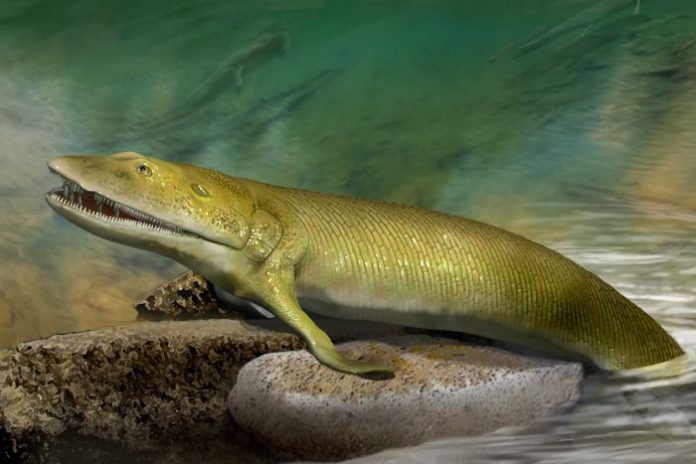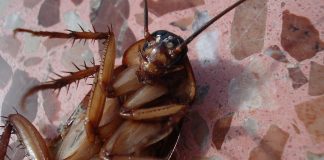A fossil fish that lived almost 400 million years ago in a shallow primordial sea had both fin rays and finger bones in its pectoral fins, an international team of paleontologists revealed on Wednesday.
The fish, dubbed Elpistostege watsonia, swam in shallow water in what is now Canada around 375 million years ago.
Today it shines a light on one of the major transformations in evolution — the move from fish to four-limbed animals known as tetrapods.
“It’s a perfect missing link in the old sense, or what we call these days a transitional fossil that bridges the gap between two major groups,” said study co-author palaeontologist John Long of Flinders University.
Professor Long said the discovery was akin to uncovering the first complete fossil of Archaeopteryx, a species on the boundary of the transformation from dinosaurs to modern birds.
“It’s one of the most exciting discoveries I’ve ever been associated with in my whole life.”
Measuring about 1.6 metres from the tip of its snout to the tip of its tail, it is the most complete fossil of an ancient fish from this species ever found.
Professor Long said the discovery of such a perfectly preserved fossil may even challenge the conventional definition of what a tetrapod is.
Tetrapods include amphibians, reptiles, birds and mammals.
The first primitive tetrapod was thought to have been an amphibian known as Acanthostega, which lived 365 million years ago.
“Tetrapods were always defined historically by the first animals to have digits … by that definition you’d have to include this fish as a basal [transition] tetrapod as well,” Professor Long said.
Unearthing a perfect fossil
The fossil, which is described today in the journal Nature, was unearthed in Miguasha, Quebec by Australian and Canadian researchers in 2010.
Until this discovery, only two fragments had been found of the fish’s skull.
Previously a fish species known as Tikaalik, that lived between 393 and 359 million years ago, was the oldest known contender for the first fish that had developed four limbs. However, while these species may also have used their fins as limbs none of these fossils have detailed pectoral fins.
Fine details within the fossil’s fins were revealed by CT scanning using a synchrotron particle accelerator.
“Normally you don’t get those delicate bones preserved, but this fish is amazing, Professor Long said.
The scans showed the fish had rows of tiny bones that are the equivalent of the digits in the human hand.
We don’t know why this fish evolved to have digits in its pectoral fins, but having more bones could have been handy for weight bearing.
“It’s likely fish like this were swimming around in seas, but also going into shallow environments where they could actually make short forays onto land,” Professor Long said.
Piecing the bones together
Kate Trinajstic, a palaeontologist at Curtin University who has studied other ancient fish fossils said the new discovery was highly significant.
“The level of preservation is excellent with all the small elements of the fin present, which are usually lost when an animal dies,” Professor Trinajstic said.
And, because CT scanning is non-invasive, it is possible to see all of the joints, which gives us a much better idea of how the bones fitted together in life.
“We have known for some time that the bones in the fin of [these ancient] fish are the same as those in our arms, however the origin of digits has been more elusive,” she said.
“This represents one of the earliest examples of the presence of the bones that will go on to form the hand and fingers that we have.”
And that’s just the beginning of what this fossil can tell us about evolution of vertebrates.
Professor Long and the team are now analysing the fossil’s skull.
“A lot can come out of one good fossil if the preservation is really good, and that’s what we’ve got here,” he said.













